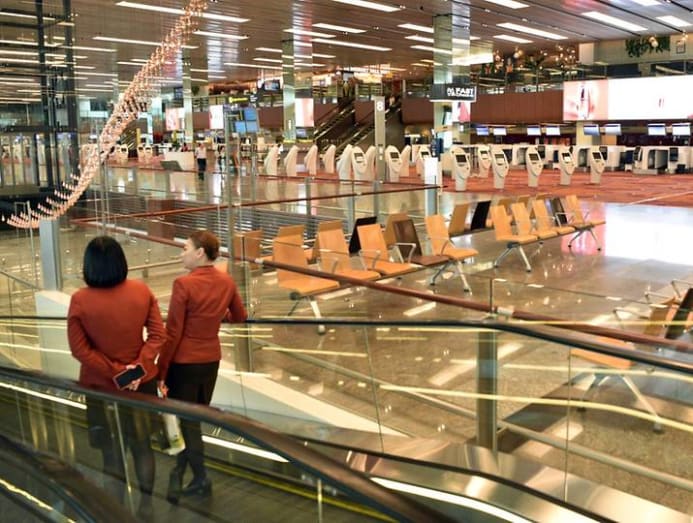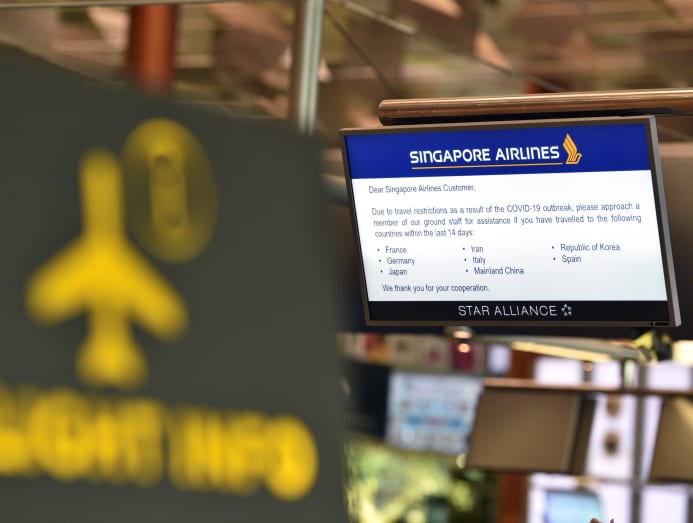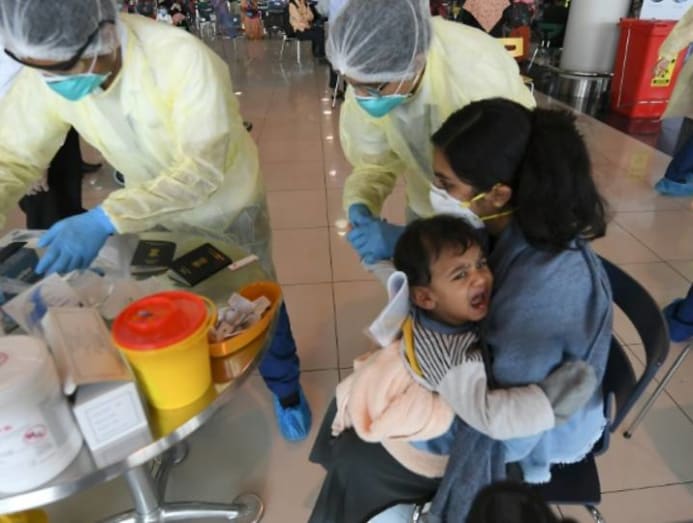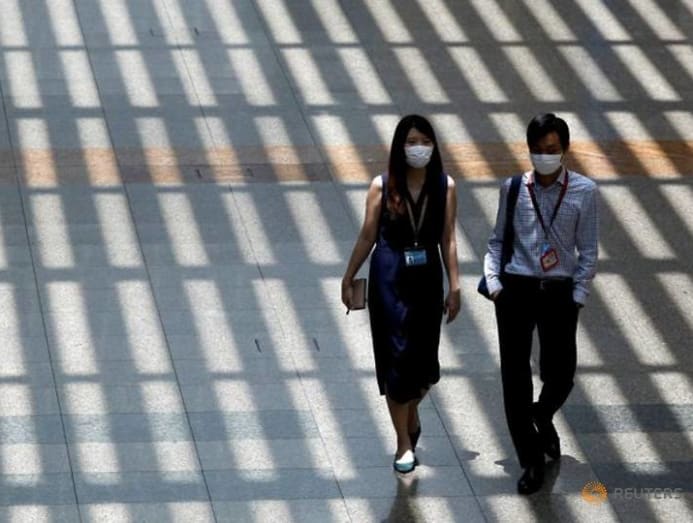Commentary: Airlines have it bad with COVID-19 but airports have it worse
SINGAPORE: The spread of the coronavirus has had a tremendous impact on the travel industry.
With a vast majority of flights grounded to terminate the international spread of the virus, major airports like Singapore and Dubai take seen passenger volumes plummet.
Airports go along to incur fixed costs for maintaining the infrastructure. Their burden is fifty-fifty greater because partners such as retail outlets and airlines have been given breaks in terms of rentals and reduced parking and other fees, respectively.
Though governments might share the costs burden of airports in the short term, information technology remains to be seen how long they will stomach such a responsibility.
A Black SWAN EVENT THAT HAS ONLY GOTTEN WORSE
Admittedly, the electric current crisis was a blackness swan type of event that could not have been predictable.
It was barely a few months ago in Dec 2022 that the International Air Send Authority (IATA) had predicted profits of The states$29.three billion for airlines in 2020.
READ: Commentary: Flight will exist leaner, maybe fifty-fifty more than responsible, after COVID-nineteen
READ: Commentary: Singapore's aviation and tourism recovery will be very tiresome afterward COVID-xix only long-term outlook remains bright
We should anticipate that, going forward, the time to come volition exist very challenging for airdrome hubs like Singapore and Dubai because the air travel manufacture may take a long fourth dimension to come back to the passenger volumes information technology enjoyed before the eruption of the pandemic.
At that place is a singled-out possibility passenger volumes may never render to pre COVID-19 levels. Even the financially potent Changi Airdrome (with share capital and reserves at S$3.54 billion and retained profits of S$4.29 billion in the last financial year) is treading carefully.
Changi Airdrome announced on Tuesday (May 12) it will append Last 4 operations until a sufficient number of flights resume at the concluding. Information technology had earlier announced in April a suspension of Terminal 2 operations for eighteen months.

The huge dubiousness has shaken projections of the prospects for air travel. In March, based on a scenario of extensive spread of the virus, IATA projected a 19 per cent loss in revenues for airlines in 2020, equating to US$113 billion. They revised that estimate to US$314 billion barely a few weeks later.
Co-ordinate to a Dollar Flying Guild survey, equally many every bit threescore per cent of consumers in the US experience comfy travelling internationally in the second half of the year, if travel restrictions are lifted. About 45 per cent take a trip booked and have not cancelled withal.
The same source predicted a 35 per cent decline in prices through 2021, and a 27 per cent increase on average through 2025 (versus the base of 2022 prices).
WORSE THAN THE GLOBAL FINANCIAL CRISIS
Some of these projections were based on the experience of the global financial crisis and the 9/11 attacks but I remain far less sanguine near the prospects of air travel in full general and airport hubs in detail.
A unique aspect of this coronavirus crisis is that it is primarily a public health crunch, which will get out psychological scars on the wellness risks of traveling and potentially catching the virus.
Fifty-fifty if the mortality rates turn out to exist low in the long run, public perceptions about the health hazards of COVID-xix may non change quickly or hands.
Although cooped-up-calm leisure travelers are keener than e'er to ditch the growing cabin fever and become explore the world, they are unlikely practise so if it jeopardises their wellness, non to mention if traveling involves them beingness quarantined for weeks once they've touched downwards at their destination.
Listen: COVID-xix: Aviation and flying never e'er the same once more
READ: Commentary: Bitter truths for Singapore Airlines about this aviation industry crash
There are also two boosted factors at work.
Beginning, although youths travel the most out of any given demographic, the elderly form a sizable proportion of leisure travelers who take longer vacations. Extensive travel forms an important of the retirement plan for many retirees.
Regardless of the overall mortality rate of the COVID-19 virus, there is an overwhelming scientific consensus the virus is more dangerous if seniors contract it. If the elderly stay away from leisure travel, this will affect overall leisure travel demand tremendously.
Second, regulatory policies for travel post COVID-19 are not yet clear. In that location is a schoolhouse of thought which argues post COVID-19, airlines will exist forced to proceed eye seats empty for social distancing.
That is likely to lead to higher prices. Basic economic principles suggest higher prices would dampen demand for air travel.
This dynamic runs confronting the grain of the last several years, during which airlines were packing an always larger number of passengers into each of their flights.
BUSINESS TRAVEL ISN'T LOOKING GOOD EITHER
Turning to business travel, I am again cautious about the long term demand and projections of a rebound for several reasons.

Outset, business organization travelers typically have to behave inconveniences such as fatigue, lower productivity and jet lag, which are mitigated to some extent because of the greater level of comfort in concern and showtime class.
The threat of jeopardising one's wellness will add significantly to the "costs" of these inconveniences. The eventual cost-do good analysis for many concern travelers will probable suggest less air travel.
2nd, during the lockdowns imposed in many countries, many businesses and employees would accept probably realised that though technological solutions such equally video conferencing cannot fully replace the face-to confront interaction facilitated by air travel, they impose lower cash costs and inconveniences.
I believe a significant part of the need for business travel will permanently shift to video conferencing.
Third, in the postal service COVID-19 world, businesses are likely to be cost conscious because of challenged profitability. Business travel is a discretionary expense that tin can be easily cut when businesses are looking to relieve costs.
READ: Commentary: Recollect flying is dead? Four reasons why business travel will bounciness back from the COVID-xix slump
Heed: Disruption 101: How COVID-19 is revolutionising work
BUT AIRPORTS HAVE IT ROUGH
The above analysis doesn't hateful that either leisure or business concern travel will go to zero. In fact, even a ten per cent reject in need will inflict a lot of pain on businesses such equally airlines and airport operations, because of their loftier stock-still costs.
Air hubs like Singapore, which depend on transit traffic are even more vulnerable.
According to IATA, planes have excellent filters and frequently refresh the cabin air, thus posing very picayune risk of catching infections. Airports are some other thing though.
If travelers are concerned about catching infections at the airport, they will exhibit a strong preference for straight flights compared to those involving a transit, thus affecting rider volumes at hubs like Singapore or Dubai.

In fact, airlines might have a few more than degrees of liberty to bargain with the challenges in the mail COVID-19 environment compared to airports.
Some airlines are already going out of business (thus reducing alternatives and competition), the survivors might lawmaking-share (thus reducing costs and supply) and airlines might discover new ways to accuse customers for conveniences that have been taken for granted in the past (for instance, inflight entertainment).
Meanwhile, airports volition suffer from reduced passenger volumes even if airlines deal with the new surroundings through the in a higher place strategies – impacting not only landing, parking and other charges they would normally charge airlines, but also airport retail and food and potable acquirement streams.
READ: Commentary: Were y'all fired or retrenched? Your employer may not tell you the difference
READ: Commentary: Even Richard Branson isn't immune to this coronavirus collapse
THEN Once more MAYBE IT WON'T Exist And then BAD
There are two caveats to the above analysis. The beginning relates to how long people will remember the COVID-19 crisis and its health implications.
If public memory is short, air travel volumes might bounciness dorsum rapidly. But I retrieve that the memories of COVID-19 are going to exist long-lasting, though nobody knows the verbal answer to this.
2d, coronavirus-related regulations (for case, rules virtually centre seats) may not be equally stringent equally is expected at this bespeak in time.
Post 9/eleven, people complained well-nigh cumbersome additional screening procedures but save for initial grumbling, that did little to dampen eventual demand within a full year.
Withal, I remember even with these caveats, the future of airports, peculiarly hubs such equally Singapore, will be incredibly challenged.
So, what might hub airports like Singapore and Dubai do? I would recommend putting expansion plans on hold.

I would also suggest investing in only those initiatives that lead to productivity improvements and staying abroad from making airports more than luxurious — projects which airports like Dubai and Doha take been undertaking
Finally, I would besides propose fugitive debt financing and conserving capital letter for rainy days or for a fourth dimension when the dubiety virtually the hereafter of air travel is resolved.
Other than financially stiff airports similar Changi, other airports apply debt financing extensively.
Airports often plow to the capital markets to finance long-term structure projects. Bail gain are the largest sources of funds for drome capital needs, accounting for approximately 54 per cent of total funds historically, according to the International Civil Aviation Organization.
READ: Commentary: COVID-19, the biggest crisis ever for Singapore'due south aviation industry and Singapore Airlines
BOOKMARK THIS: Our comprehensive coverage of the coronavirus outbreak and its developments
Download our app or subscribe to our Telegram channel for the latest updates on the coronavirus outbreak: https://cna.asia/telegram
Nitin Pangarkar is Associate Professor in the Section of Strategy and Policy at the National Academy of Singapore Business concern School and author of Flight Loftier in a Competitive Industry: Singapore Airlines.
Source: https://cnalifestyle.channelnewsasia.com/commentary/commentary-airlines-have-it-bad-covid-19-airports-have-it-worse-283026
0 Response to "Commentary: Airlines have it bad with COVID-19 but airports have it worse"
Postar um comentário